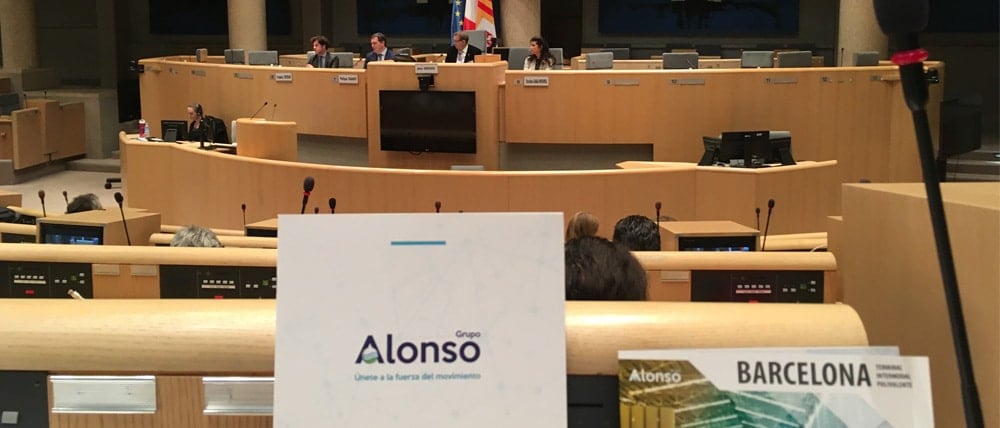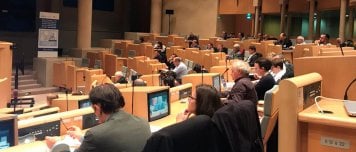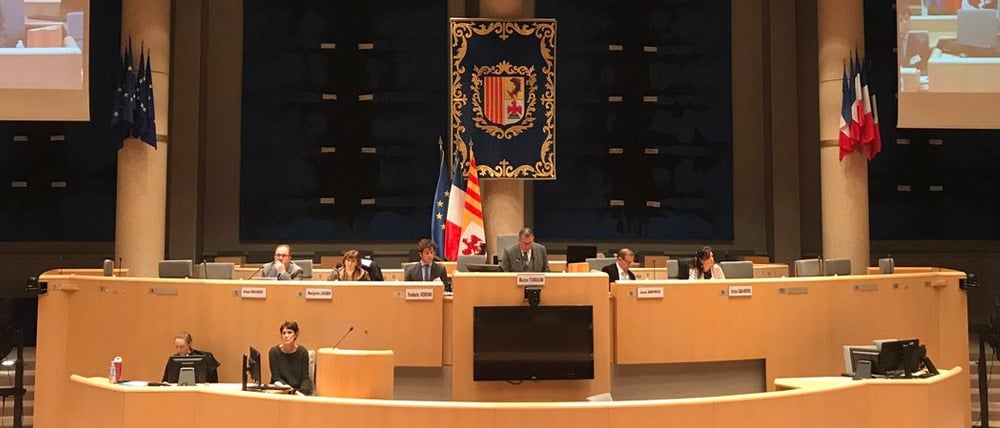Alonso Group participates in the last FERRMED conference in Marseille with its Global Logistics Plan
[/ms_carousel]
The Alonso Group, through its Global Logistics Plan, has been committed to railways for several years as the cornerstone of a new logistics concept. Its objective is to connect by rail the main hubs of maritime freight traffic in our country, gradually migrating the transport of goods by road to the railroad network and using gas-powered trucks for last mile transport.
This example of intermodality, unique in the Iberian Peninsula, makes great strides towards structuring the European Union’s commercial area through a solid, stable and efficient transport network. This has been one of the reasons why the project was co-financed by the European Union through its “Connecting Europe” mechanism.
The connection between the North Sea and the Mediterranean under discussion
The French city of Marseille was responsible for hosting a working day organised by FERRMED under the title “Development of infrastructures and railway offers on the North Sea – Mediterranean corridor“. In it, different sessions have highlighted the vital importance of this strategic axis in its continental stretch, which extends from Scandinavia to Gibraltar.
The main objective of this conference was to bring to the table the challenges facing traffic management in an area such as this one, with a highly urbanised hinterland and significant economic activity. In addition, the large number of trade flows generated by the ports of the Iberian Peninsula require certain improvements in infrastructures that allow us to opt for intermodality.
The southern gateway to Europe
The continental section of the North Sea-Mediterranean Corridor corresponds to the central part of the “Great Railway Axis” proposed by FERRMED. This strategic axis connect, through its main trunk and its connected branches, the North and South maritime fronts, as well as the most important industrial and logistical regions of Europe.
Due to its connections with the Mediterranean, this corridor offers a great opportunity to become the southern gateway to Europe, combining land and sea transport perfectly. First, however, it is necessary to deal with a number of obstacles such as the lack of sufficient sections of European track gauge on part of the lines of the Spanish Mediterranean corridor.
In this sense, the Alonso Group Global Logistics Plan stands out as an effective solution to eliminate these bottlenecks, since it is committed to a concept of logistics in which the integration of its different maritime trading platforms through the railways will make it possible to optimise railway traffic, achieving an efficient, safe and highly regular service.
A clear example of this is the multipurpose intermodal platform (BTIP) that the Alonso Group has developed in Barcelona. This facility has become the first logistical hub operating in the Spanish section of the Mediterranean Corridor that can absorb rail traffic between Spain and the rest of Europe, as well as to the interior of the Peninsula, without the need to make a change in the border.








